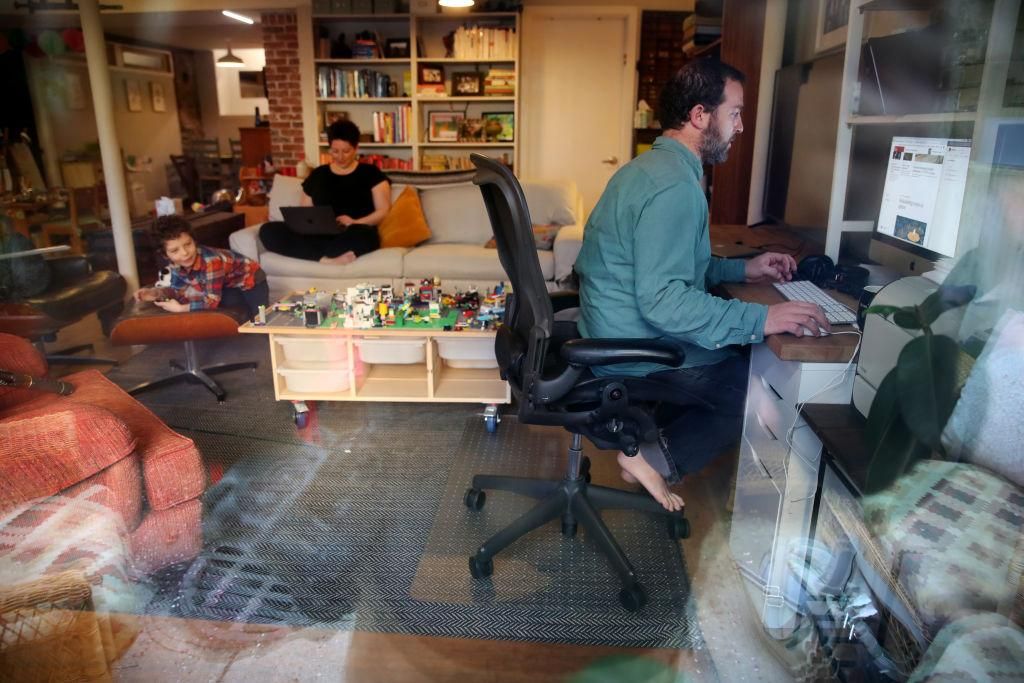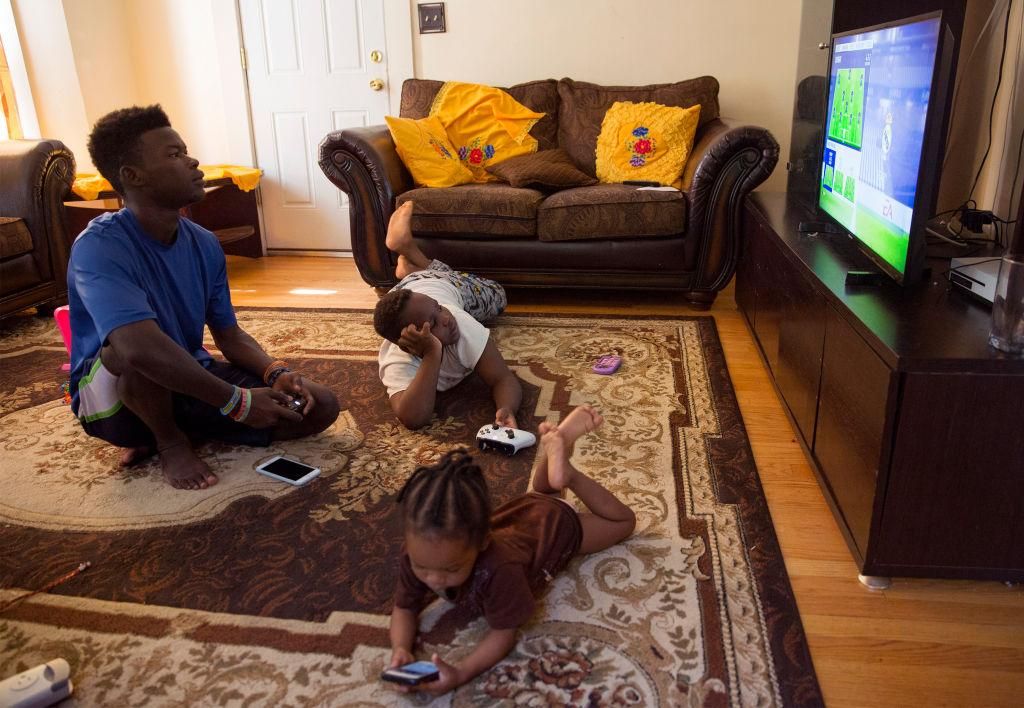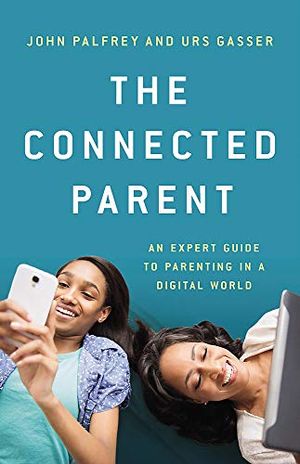Ten Research-Backed Tips on Parenting in a Digital Era
With screen time at a high during the Covid-19 pandemic, two educators offer some advice
/https://tf-cmsv2-smithsonianmag-media.s3.amazonaws.com/filer/21/fb/21fb2f0b-6581-467a-b9ca-1c7ed0b168b5/remote_learning.jpg)
While there hasn’t been a major study published yet on how much time students have spent online during the Covid-19 pandemic, every indication suggests that the answer is “more.” In this era of social distancing, stay-at-home orders, online schooling and the return to in-person classes, research is more important than ever—it can help teach us how to parent well in a digital era. Experience matters too, of course; what you know from observation and from your child’s personal history can provide essential context for how to apply the data.
For the past 15 years or so, as classroom teachers in the fields of law and history, teaching students at the high school, college and graduate levels, we have been researching the ways in which young people use technology. In 2008, we published a book on our findings based on interviews, focus groups and surveys that we and our fellow researchers around the world conducted called Born Digital. To share our parenting advice based on the research, we recently published The Connected Parent.
The Connected Parent: An Expert Guide to Parenting in a Digital World
John Palfrey and Urs Gasser bring together over a decade of research at Harvard to tackle parents' most urgent concerns. The Connected Parent is required reading for anyone trying to help their kids flourish in the fast-changing, uncharted territory of the digital age.
The answer these days, for most families, can’t be “don’t ever use screens.” So, it is more a matter of what you can do to make all that screen time more productive and to improve overall health, learning and well-being. Here are ten parenting ideas based on what the research tells us.
Screen time is not one-size-fits-all.
Screen time is much more about quality than it is about quantity. As our kids are Zooming and Snapchatting and Tik Toking their way through a pandemic-scarred school year, the idea that we would set sharp limits on the amount of time they are looking at devices seems a little hard to imagine too. (And are you really putting down your phone yourself? More on that in a moment.)
The research tells us that the time kids spend on devices is less important than what they do when they are connected. Of course, it is important to note that the rules for screen time in a home should vary by age. We share the view of the American Academy of Pediatrics, for instance, that very young children—say, under the age of 2—have no good reason to be exposed to screens and that there are downsides of doing so. The AAP and other researchers have found lasting negative effects of too much screen time at an early age on children’s language development, reading ability and short-term memory. The one exception we make for these little ones is for connecting with doting grandparents or other relatives on FaceTime or Zoom. On the other end of the spectrum, it’s clear that you can’t have effective screen time limits for most older teens; both research and experience shoes that they will ignore you and will simply work around your efforts to control them, undermining their trust in you and the strength of your relationship in the process.
Take data privacy seriously yourself and translate that experience into talks with your kids.
Take data privacy more seriously than you do right now. And then talk about it with your kids, ideally by the time they have reached the tween years. That’s the point at which they have likely begun to engage regularly with social media, whether on a mobile phone you’ve given them or on another device inside or outside the home. Based on the research we have done at the Youth and Media Lab at the Berkman Klein Center at Harvard University, we have seen that many regular practices can help young people develop good data privacy habits. While an increasing number of states require some form of digital literacy classes, most parents can’t rely on schools to teach the data skills and habits that young people need. These data-driven teaching tools can be accessed by anyone for free via the Youth and Media Lab website.
Young people do make mistakes when it comes to sharing too much information about themselves online. For instance, some do not think enough about the longer term consequences of sharing certain images of themselves or engaging in discussions that may involve hurtful themes for others. But the research shows they are likely to have better and more ingenious coping skills when it comes to using social media than you think. In our focus groups and interviews, we have observed students’ ability to learn and teach one another about smart ways to communicate online without creating long-term problems for themselves or their friends. It’s important that you’re on the same page, sharing tips and practices as you both navigate the new worlds of social media, gaming and just about any new data-hungry application.

Help your child develop safety skills but don’t let fear be your guide.
The reality of online safety risks is a little different than what mainstream media might have us all believe. The risk of meeting someone who will do them physical harm—any parent’s worst nightmare—is much lower today than it was 30 years ago. It is true that the places where young people can meet those who would harm them have moved, in part, from the local park to online spaces. But these spaces are more likely to be places where kids know trouble could lurk.
The more frequent harms that young people—typically in their tween and teenage years—report have to do with bullying. Bullying online is almost always connected to bullying offline. The young people most likely to be bullied offline, including LGBTQIA+ youth and those from other marginalized communities, are more likely to be bullied online. The exact prevalence of bullying on the Internet is much debated, but suffice to say that the psychological risks are real and are almost always tied to the treatment of one another in real space. It’s rarely just “cyberbullying;” the research by Data & Society’s danah boyd, among others, shows that the term “bullying” is more apt in the sense that the psychological harm tends to cross media, time and space.
You might consider following some simple rules as a family. One is not to use online dating sites until a certain age—say, 18. And since we know that those who are bullied are more likely to bully others, make kindness an affirmative family value. Find ways to practice this value in online as well as real-space interactions of all types.
Do one thing at a time. There’s no such thing as multi-tasking.
Just do one thing at a time. Multi-tasking isn’t possible. Given that many kids grow up using devices for long periods each day, by the time they are in middle school and high school, they often think that they are able to multi-task. But no one really can, as researchers associated with the American Psychological Society and many others have shown over the years. What they are doing is switch-tasking, changing quickly between tasks. While there may be value in this kind of activity—say, for someone piloting an airplane—kids doing their homework should be focused on one thing, not trying to do several at once.
Turn off screens a half hour, or ideally an hour, before bedtime.
Kids do not get enough sleep. Sleep scientists such as Brown University’s Mary Carskadon tell us that teenagers, for instance, would ideally get nine and a quarter hours of sleep each night. One reason this is not happening is the presence of screens late in the day. An easy approach is to have a rule about turning off screens at least an hour before bedtime. If that’s not possible, then try at least half an hour.
Put all screens out of view during homework and bedtime.
As teachers, we know that learners from the very youngest ages all the way through high school are tempted when there is a screen in front of them. And if we’re honest, that is true of all of us, whether young or not. That’s no surprise: the designers of social media and online games use psychological research to ensure that their services hold our attention.
Assuming the learning isn’t happening through the device, keep all devices out of view while homework or in-person teaching is occurring. When meeting in an actual classroom, we have asked all students to turn off their phones and place them in a basket out of view. That’s obviously not possible in a virtual learning environment, but it can be a useful tip for students of all ages to set aside their phones—in a drawer or otherwise out of view—during homework time.

Kids actually do learn some things during all that gaming.
Many parents tell us they worry about the effects of online gaming on their child’s life. After all, most studies show that more than 90 percent of young people—of both genders, and spanning ages from the single digits through adolescence—are online gamers to one degree or another. And certainly, for some young people, gaming can become a time-sucking obsession that crowds out other healthy activities. But studies consistently show that fears about online gaming are wildly overblown. Little evidence exists for the frequent claim that video games make young people more aggressive or less kind to one another, a charge often leveled at this generation. The key realm where studies show there is truth to this claim is in the most violent, sexual online and gaming environments, which have been shown to lead to more aggressive sexual behavior among boys.
On the contrary, gaming can be a positive driver of learning, both in terms of cognitive and social and emotional gains for young people. One study published in the Journal of Neuroscience in 2015 by Gregory D. Clemenson and Craig E.L. Stark showed that video gamers engaged in complex three-dimensional games improved their memory in a demanding test. Computer design and programming tasks have led to a wide range of positive learning outcomes for young children using the program Scratch (an MIT Media Lab designed learning environment for ages 8 to 16) through older students carrying out more complex tasks. A study published in 2019 by Yemaya J. Halbrook and colleagues showed a range of positive social and emotional outcomes from gaming among a broad range of school-aged children, especially in terms of relations to other young people and when combined with physical activities.
Kids are big on getting engaged in civic life—and often do so through new technologies.
Some think that kids these days are apathetic when it comes to politics. Some parents worry about the rate of voting going down among young people. People often blame the idea of “clicktivism,” in which young people click “like” on a page and think they have done their part to improve society.
While changes have indeed occurred in how kids are acting, digital tools can be a big part of young people, especially in high school, getting involved in constructive social change. Studies have consistently shown that civic engagement broadly is up, not down—in fact, in one long-term study by the Higher Education Research Institute at UCLA, community engagement has recently hit all-time highs. The same studies show big increases in the likelihood of involvement on the part of African American and Latino young people in high school and college. The nature of this engagement has changed a bit; kids these days are more likely to volunteer, to march in the streets (think of climate change and #BLM these days), or to start something on their own online. At the same time, they are less likely to trust and invest in institutions of the past and to participate in “dutiful” civic acts. Many of these same themes are playing out globally as well as in the United States, as UNICEF and others have reported.
Take breaks! Jumping jacks, nature walks, device-free time…
With kids tied to their computers for fun, social engagement, homework, and often class time during the pandemic, the need to get them moving has never been higher. In between Zoom sessions, encourage them to do jumping jacks or lunges, to dance to a Bollywood video, or take a trip around the block or in the park.
It’s going to be different in every family, but device-free time is a must. Even though we started out by saying not to stress too much about the numbers involved in screen time, the importance of connecting offline and taking a break from screens is high these days. It’s also a great way to compare notes if you, too, are spending too much time online. This brings us to our last tip, perhaps the most important of all.
You need to model.
You don’t need research to prove that what you do as a parent matters to your kids. The old adage “the apple doesn’t fall far from the tree” has as much to do with your children watching you as it does with genetics. Kids are watching us at all times, whether we know it or acknowledge it or not. If you are telling kids to care about your privacy but you are letting it all hang out there on your Facebook page or dating site profile, believe us, they will know it. If you are telling them to limit time on their devices and run around outside and play, you better not be on your phone playing Word Cookies as you are saying it. Nothing will matter more in terms of your ability to guide and support your kids in their digital habits than your own practices.
The bottom line from all this research: communication is pretty much a key to everything. We communicate to our kids through our actions, our willingness to listen to them, and our ability to learn and to grow. The connected parent is one to whom their kids will turn when things get tough; even if you don’t know the answer, you’ll have an entry point for conversation when it really matters. And in the really good times, and in all the times in between, you might have some fun playing online games, bonding over new apps or finding new ways to access old films together.
A Note to our Readers
Smithsonian magazine participates in affiliate link advertising programs. If you purchase an item through these links, we receive a commission.
